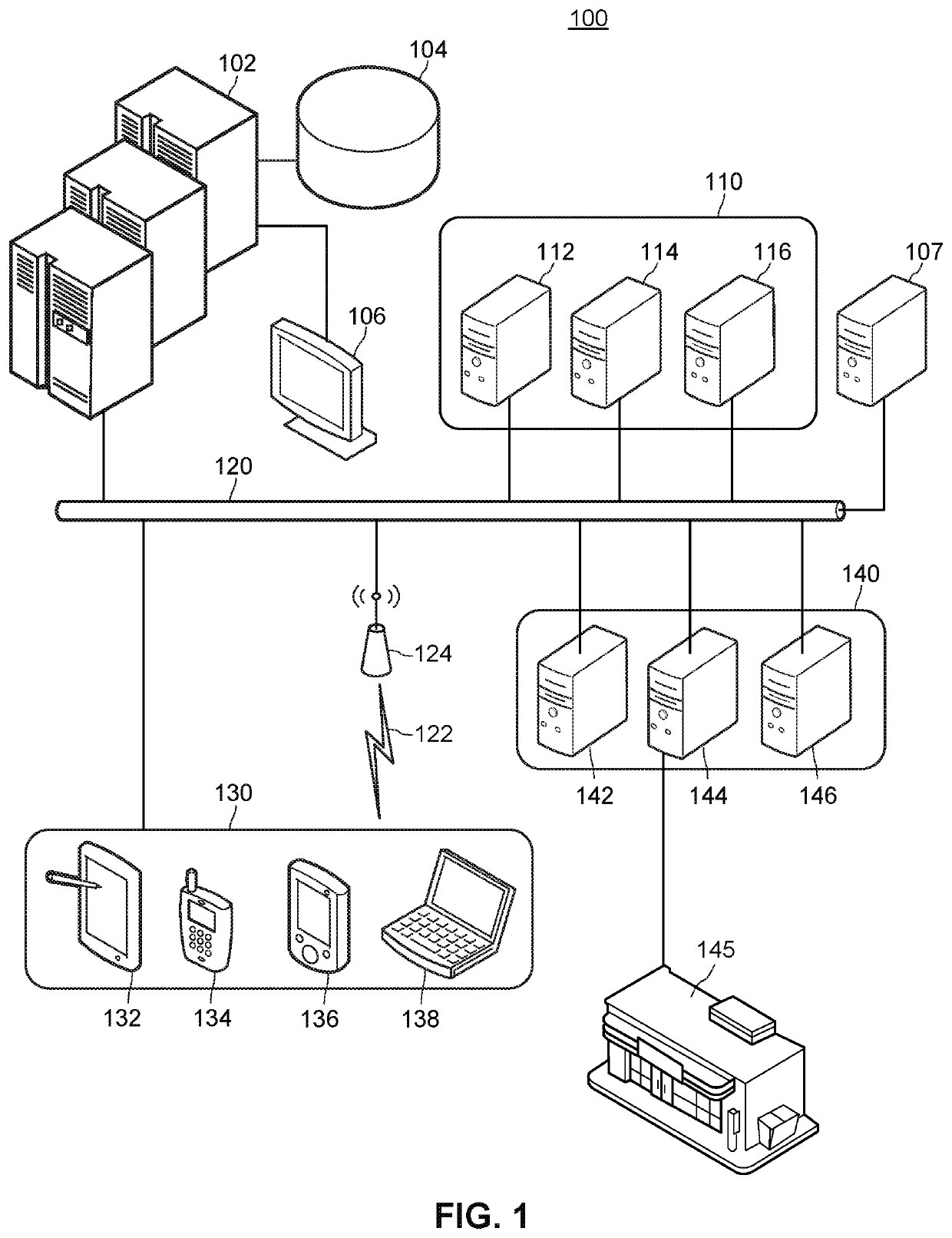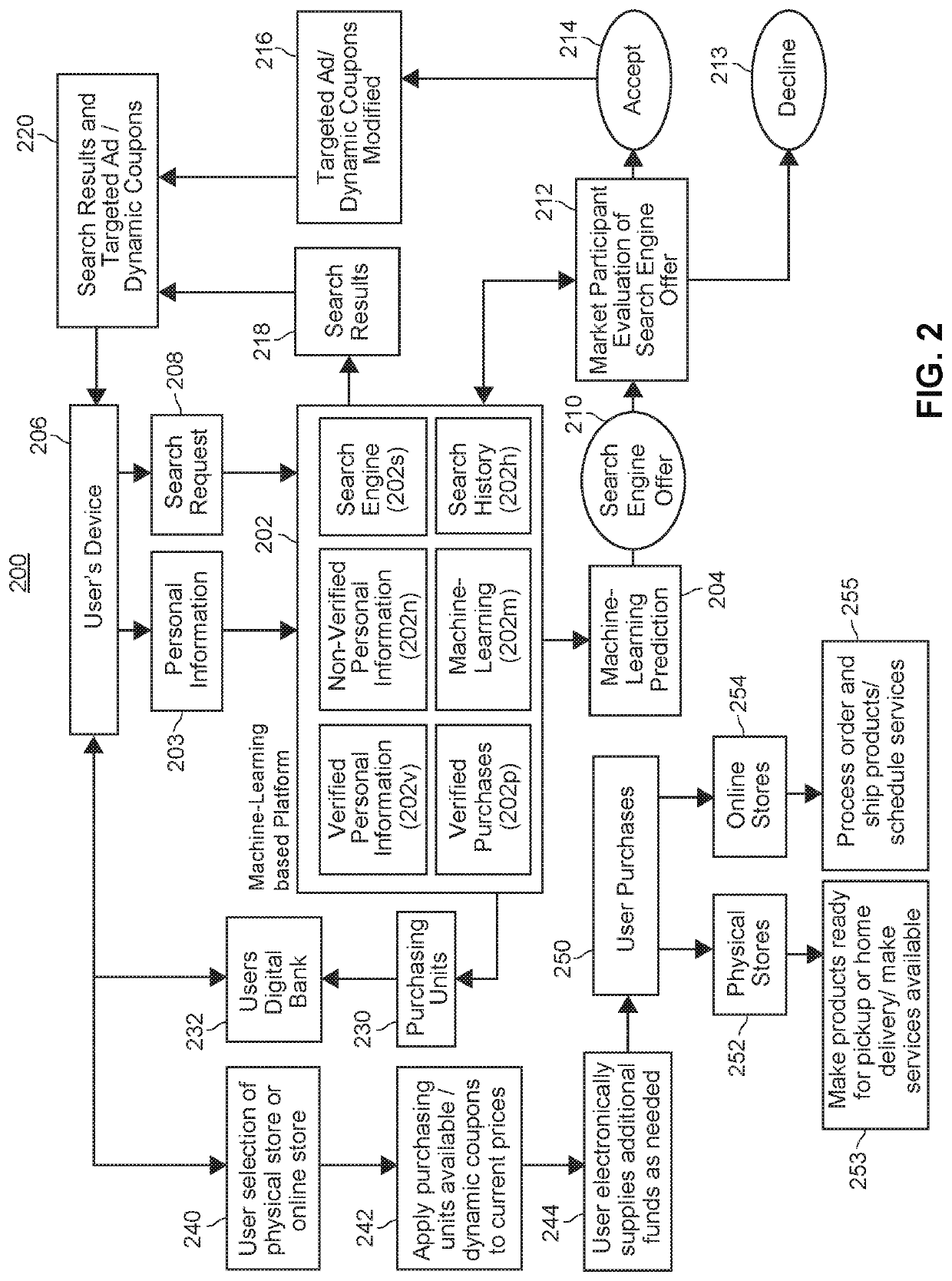Machine-learning based systems and methods for optimizing search engine results
a machine learning and optimization technology, applied in the field of online search engines, can solve the problems of user information being neither clearly known nor monetized, and users being generally not incentivized or otherwise compensated for the information they submit, so as to facilitate the flow of useful information
- Summary
- Abstract
- Description
- Claims
- Application Information
AI Technical Summary
Benefits of technology
Problems solved by technology
Method used
Image
Examples
Embodiment Construction
[0028]FIG. 1 illustrates an example network diagram 100 including a machine-learning based platform configured to optimize search engine results in accordance with the present disclosure. For example, the machine-learning based platform could be implemented on one or more server(s) 102. The server(s) 102 may include one or more processor(s), one or more computer memories, one or more networking ports, and / or other computing modules or components as described, for example, for FIG. 4 herein. The server(s) 102 may implement one or many operating systems such as Microsoft Windows, Linux, Unix, or the like. In one embodiment, the machine-learning based platform could be accessed, managed, administered, or operated by an operator or an administrator via a local terminal 106. In other embodiments, the machine-learning based platform could be accessed, managed, administered, or operated by the operator or administrator remotely, such as via computer network 120.
[0029]The server(s) 102 may ...
PUM
 Login to View More
Login to View More Abstract
Description
Claims
Application Information
 Login to View More
Login to View More - R&D
- Intellectual Property
- Life Sciences
- Materials
- Tech Scout
- Unparalleled Data Quality
- Higher Quality Content
- 60% Fewer Hallucinations
Browse by: Latest US Patents, China's latest patents, Technical Efficacy Thesaurus, Application Domain, Technology Topic, Popular Technical Reports.
© 2025 PatSnap. All rights reserved.Legal|Privacy policy|Modern Slavery Act Transparency Statement|Sitemap|About US| Contact US: help@patsnap.com



